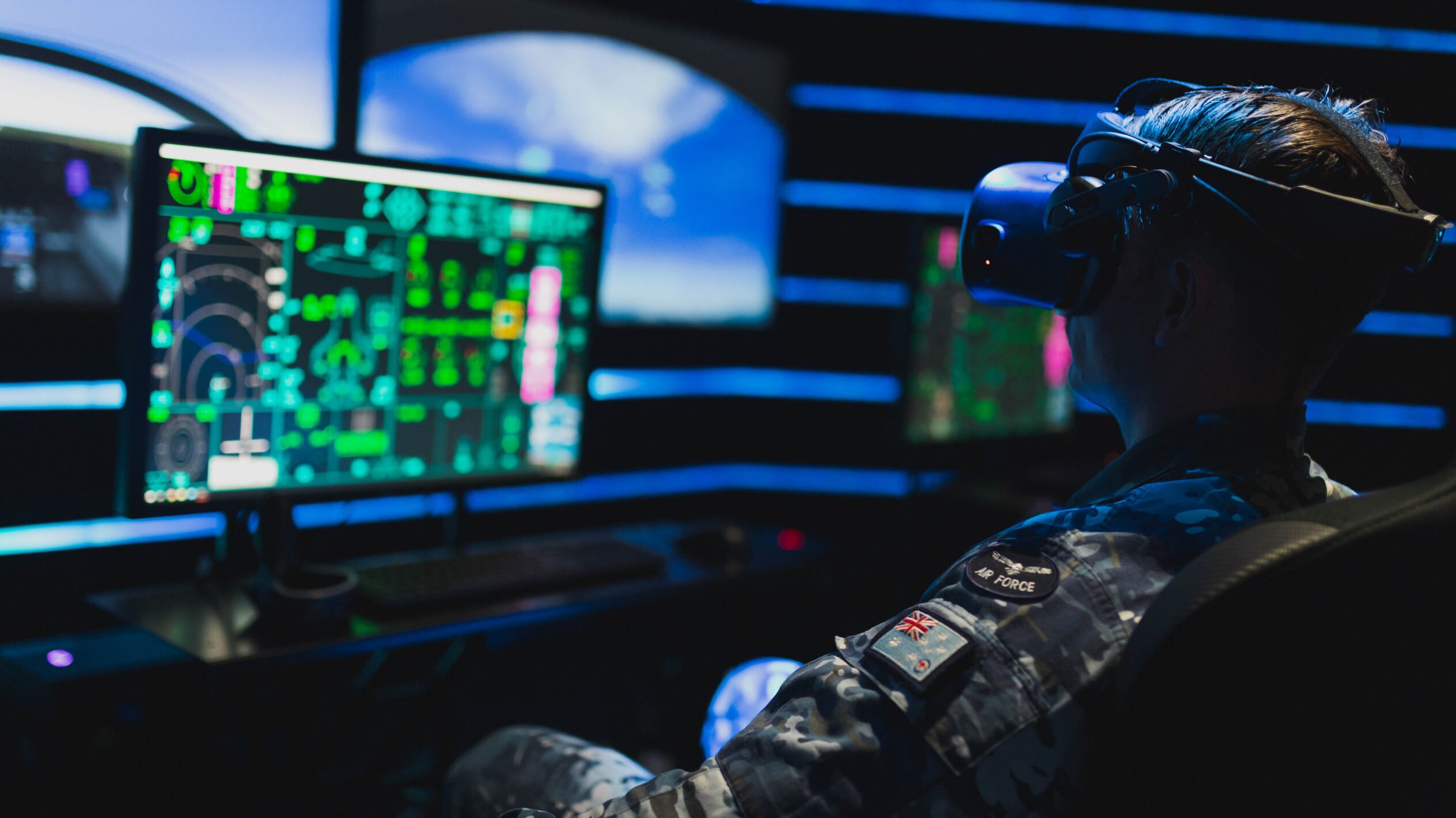
Lockheed Martin Air 6500 image Credit: Lockheed Martin Australia
CANBERRA — The fight to develop a crucial system tying together planes, ships, subs and troops in the Indo-Pacific is underway, with Lockheed Martin and Northrop Grumman battling it out for the right to produce an Australian project that comes with an export market estimated to be worth $83 billion AUD ($55 billion US).
The winner for the program, known asAir 6500, is expected be announced later this year. The project has clear similarities to work by US companies on All Domain systems, with a focus on a system that will enable Joint All Domain Command and Control (JADC2). Several close observers of the Australian effort believe the work here may enable Australia to leapfrog the United States and provide an ITAR-free system that might prove very attractive to regional allies.
Lockheed Martin Australia invited reporters to its headquarters before the Avalon Airshow to highlight its offering for the Joint Air Battle Management System, with its CEO and representatives of some of the 10 Australian companies working with the American giant.
Lockheed started working on a version of Air 6500 seven years ago, before it was known by that name, and has invested roughly $100 million of its own money developing it. That includes doubling the size of its Australian workforce to 200 to develop the project. The project started with 10 Americans and 10 Australians.
Lockheed Australia’s CEO, Warren McDonald (known by all as Macca), sees the system as a key part of what he called a “massive recapitalization” of Australia’s military. The Defense Department here is moving to cope with “a present that is shifting very quickly,” an obvious reference to China’s vast and fast modernization, as well as Russia’s efforts to disrupt the post-war international order.
Key to the Air 6500 system, of course, is its open architecture, enabling any company to allow a sensor or subsystem to be connected to Air 6500. One of the tools Lockheed has developed is what Dan Stone, lead system engineer, called “platform as a service” which allows varying applications to “talk to each other.”
Stone said this marked a shift for the program: “We’ve gone from trying to eliminate complexity to enhancing simplicity.”
One of the most intriguing capabilities that Lockheed is building into its system is what the company is claiming asa world-first passive radar system by an Australian company called Silentium.
The passive radar works by tracking reflections of objects from FM radio waves. Multiples of the relatively low-cost system can be deployed around the world to track a wide array of objects from Low Earth Orbit to the surface of the sea.
Simon Palumbo, Silentium’s CEO, said his company is the only one providing “covert situational awareness” in all domains.
While it won’t replace active scanning radar, which is crucial for targeting, Pelumbo agreed his system’s Maverick passive radar would provide an important cueing capability to active radar. Of course, passive radar will not attract enemy fire since it does not emit.
The Australian company Consunet provides Air 6500 with an electromagnetic battle management subsystem which allows pilots and weapons to find ways through radar and other detection nets to avoid detection. It includes a visual system to help plan missions.
One of the interesting twists in the Lockheed system is its use of a system provided by the company C4I that, with an API plugin, allows the sharing of classified voice communications across the network.
Northrop Grumman’s offering for Air 6500 is based on its Integrated Battle Command System (IBCS), which passed initial operation test and evaluation (IOTE) in November last year. IBCS links together existing missile defense assets to bolster command and control, and ultimately will plug into the US military’s JADC2 effort.






















